Strange shapes of snowflakes
By creating snow crystals in the laboratory with different weather conditions, scientists found their shape to be determined by air humidity and temperature.
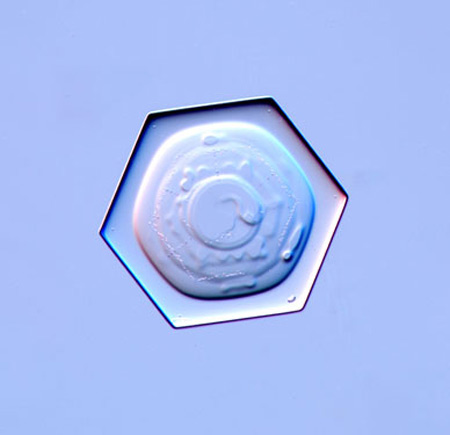
Hexagon is the original shape of most snowflakes. Then their edges will change to create more complex shapes. In hexagonal form, snowflakes are so small that we can hardly observe with the naked eye.
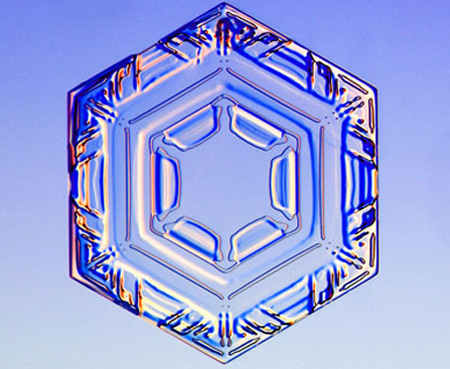
This disk-shaped snowflake begins to transform from its original shape, with raised edges and dents on the sides.
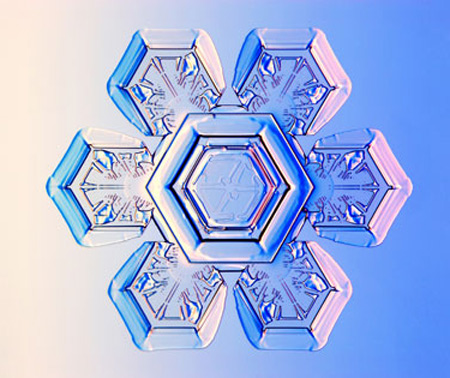
6-winged snowflakes attached around hexagonal crystals. Its wings are always adorned with symmetrical motifs. The similarly shaped snowflakes often form when the temperature is between -2 and -15 degrees Celsius.
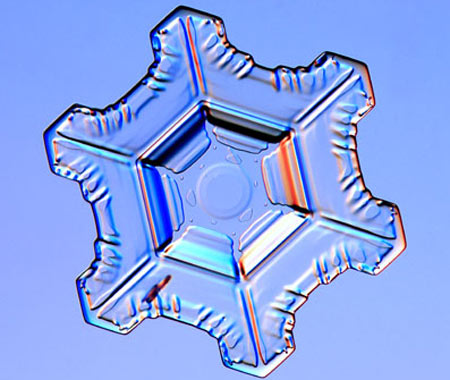
This snow crystal also possesses 6 wings but has a more complex shape, with floating lines running parallel from the top of the hexagon to the top of the wing.
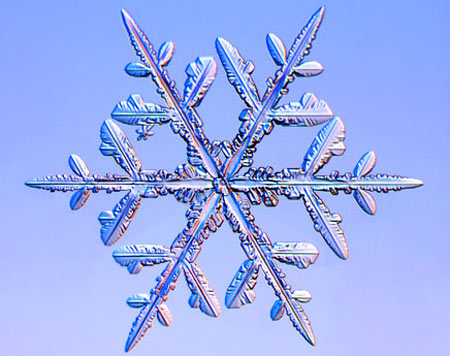
Tree-shaped snowflakes with 6 wings pointed out from the center and branched. They are relatively large in size (2-4 mm diameter) so they can be viewed with the naked eye. This is the most common form of snowflakes and you can see them all over cold countries.
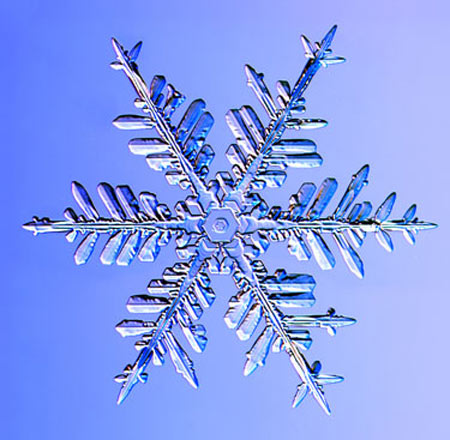
The wings of this snowflake have many branches so they look like ferns. They are quite large in size when falling to the ground (diameter 5 mm or more)

Hollow cylindrical snowflakes have two pointed tips facing each other. They are very small so you need a microscope to observe the two tips.

Fragile ice crystals will have a needle-like shape when the temperature drops below -5 degrees Celsius. If they fall on your sleeve, they look like silver hairs. One of the things that surprised the scientists was that from the thin disk shape, the snow crystals could turn into a thin cylindrical shape when the temperature fluctuated by a few degrees Celsius. a mystery.

Initially, this snowflake has 3 cylindrical shapes, then they have two flat plates attached at the ends.

At first glance you may think this is a 12-bladed snowflake, but in fact it is two overlapping snowflakes. The two adjacent wings of this combination create a 30 degree angle.

The triangular snowflakes are formed when the temperature drops below -2 degrees C. They are very rare, so those who see them believe they will be lucky.

Clouds are made up of countless tiny droplets and sometimes those particles collide with snowflakes and freeze, creating many dots on the surface.
- Magical beautiful snowflakes
- Life cycle of a snowflake
- No two snowflakes are the same
- Snow flower: The miraculous creation of nature
- The groves of strange shapes like from another world
- Unique flowers with strange shapes in the world
- Discover 9 islands with strange shapes
- Discover strange things on Mars
- Watch the clouds with strange shapes
- Animals have strange shapes
- Huge data warehouse contributes to explain the strange shapes of insect eggs
- Detecting ancient whale fossils with strange shapes
 The 11 most unique public toilets in the world
The 11 most unique public toilets in the world Explore the ghost town in Namibia
Explore the ghost town in Namibia Rare historical moments are 'colored', giving us a clearer view of the past
Rare historical moments are 'colored', giving us a clearer view of the past The world famous ghost ship
The world famous ghost ship